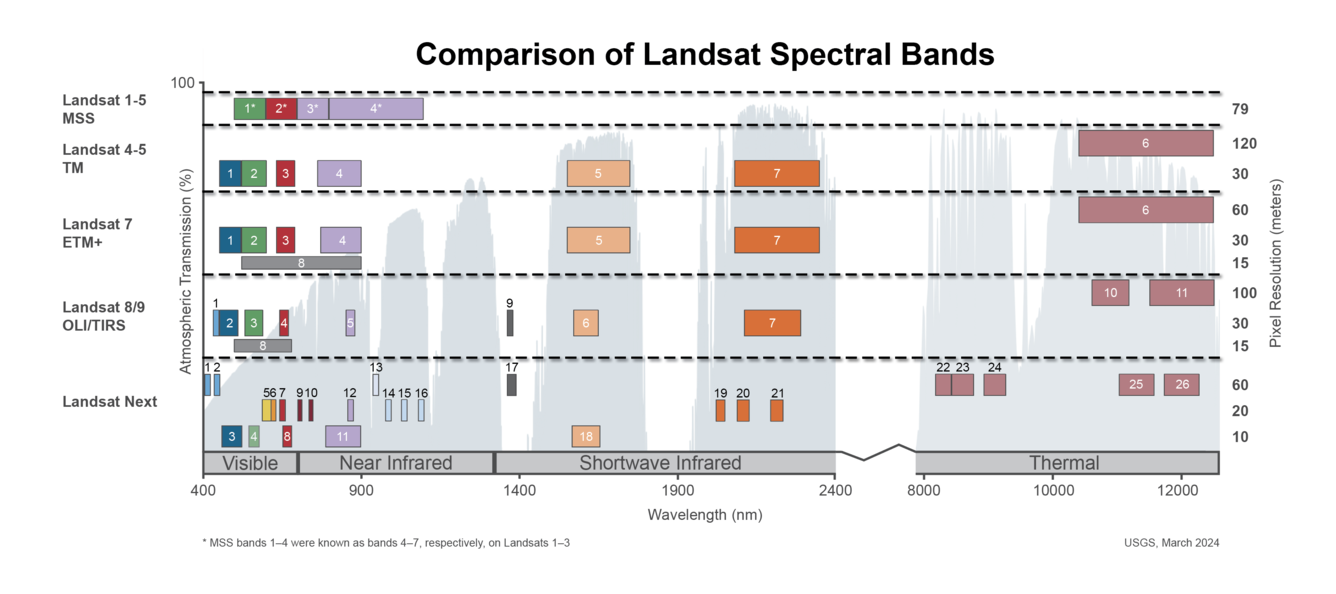Spectral Bandpasses for all Landsat Sensors

Detailed Description
This image shows the spectral bandpasses for the sensors on all Landsat satellites.
- Landsat 1-5 Multispectral Scanner System (MSS): the sensor onboard each satellite acquired data in four spectral bands in the visible and near infrared spectrums
- Landsat 4 and Landsat 5 Thematic Mapper (TM): the sensor onboard each satellite acquired data in seven spectral bands, and included shortwave infrared and thermal data
- Landsat 7 Enhanced Thematic Mapper Plus (ETM+): acquired data in a total of eight spectral bands, including a 15-meter panchromatic band
- Landsat 8 and Landsat 9 Operational Land Imager (OLI) and the Thermal Infrared Sensor (TIRS): the sensors onboard each satellite acquire data in a total of eleven bands, including:
- Band 1 – “Coastal / Aerosol Band”: helps scientists measure ocean color in coastal regions and is also useful for aerosol detection
- Band 9 – “Cirrus Band”: For measuring light in the part of the electromagnetic spectrum where the clouds are most visible for enhanced cloud and shadow detection
- Bands 10 and 11 thermal bands for measuring thermal infrared radiation
- Landsat Next increases the acquisition of data in the number of bands drastically, with a total of 26 spectral bands acquired by each satellite in the triplet constellation.
*Landsat MSS = the numbers shown are for Landsat 4 and Landsat 5; Landsat 1-3 band numbers are 4, 5, 6 and 7.
Sources/Usage
Public Domain.

